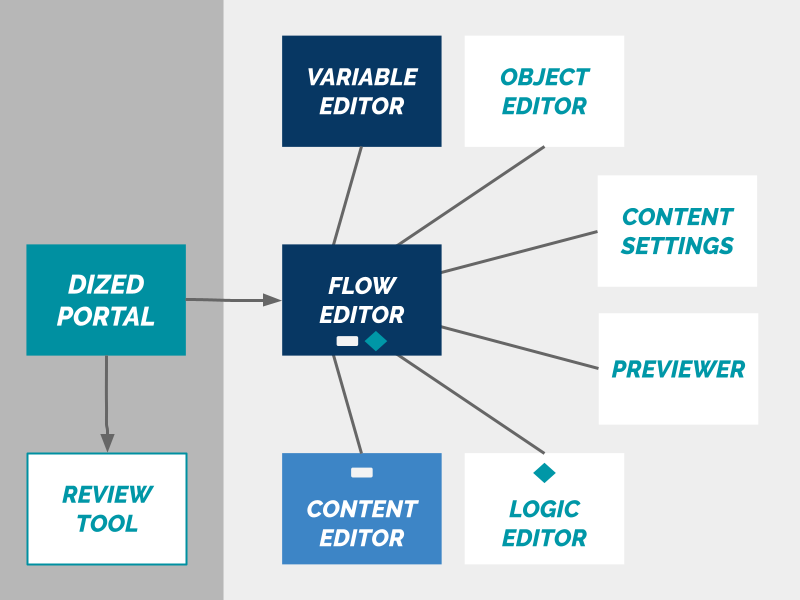Tutorial Tool Overview
DEVELOPMENT NOTE: As we constantly update the tools, there might be some differences between the Guide and the Tool. However, typically they are small and while we update the changes in the guide, you can learn more about them in the General / What’s New section.
The Tutorial Tool allows creation of interactive and dynamic learn-while-you-play tutorials for tabletop games.
The TCT (Tutorial Content Tool) consists primarily of five different Editors:
- Flow Editor (FE)
- Object Editor (OE)
- Content Editor (CBE)
- Logic Editor (LE)
- Variable Editor (VE)
Together these components allow you to map out, structure, animate, subtitle, and animate your content.
Flow editor is the heart of Dized Tutorial Tool
Flow Editor
The story, or the “flow” of the tutorial is built in the flow editor. This flow chart visualizes of how the story will flow throughout the tutorial.
A basic building block for a tutorial is a Step (sometimes referred to as a Block). There are two kinds of Steps:
- Content Steps (white rectangles) are seen by the players and they typically either provide information or request it. Each Step in the tutorial is kind of like a slide in a slide show. Content Steps are edited with the Content Editor.
- Logic Steps (green diamonds) are not seen by players. They are meant for executing logical actions, for example guiding the flow based on certain conditions. Logic Steps are edited with the Logic Editor.
The grey arrows indicate how the story can flow between the steps.
Content Editor
Content editor is where the preset objects (see Object Editor) are put into scenes to create the visual content and animations. Practically everything that the user sees during the tutorial is done in the Content Editor.
Object Editor
All visual elements used in the Content Steps are first created in the Object Editor. Typically this includes setting up the game components as 3D elements and other necessary UI elements, such as buttons needed in the content.
Logic Editor
Logic Editor allows executing of logical actions based on certain conditions. For example: if we have 3 players, then set rounds of play to five.
Variable Editor
Variable Editor is where all Variables used in the tutorial are managed. Variables are “containers” which allow the storing and manipulation of values, and the usage of these values in the tutorial Logic. One thing to store into a Variable could be for example the amount of players, or information about which player starts the round.
Previewer
Previewer allows the quick testing of the content within the tool. This simulates the same experience that users will get when they use the content in Dized.
Content Settings
Content Settings is where general information about the specific content is handled, such as the name, type, price and description of the content.


